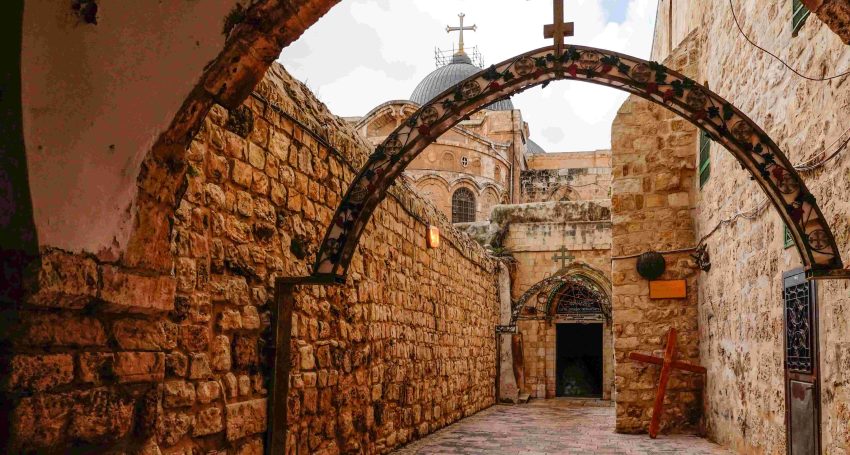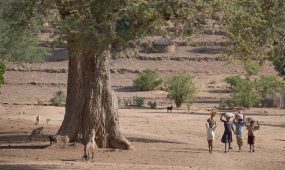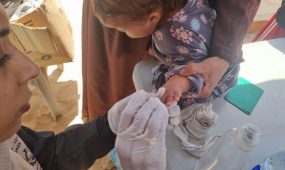Last month in Jerusalem
International
The Rev’d Dr Thomas Meyrick reflects on a recent visit to Jerusalem

On the last Sunday of May, at the end of a month of study in Jerusalem, I took the tram and bus out to the village of Ein Karem, on the edge of the city. Readers who have been on pilgrimage to the Holy Land may be familiar with the churches marking the places where John the Baptist was born, and where Mary visited Elizabeth. I, too, first came on pilgrimage 23 years ago, and my memories of the pretty village, with its shops and cafés lining the road as it winds down into the valley, were fairly accurate.
Between the two pilgrimage sites, the road passes Mary’s spring, where water from an aqueduct emerges under a mosque. The mosque is closed up and abandoned, as it has been since the formerly Arab village became a Jewish one after the 1948 war. There is a certain sadness about it.
I stopped to say evening prayer in the Church of the Visitation, where the Magnificat was first proclaimed. It seemed appropriate; but the sadness persisted in these local churches, too. They are well cared for by the Franciscans, and there are a few other monasteries around the valley, but there is an emptiness here. The Christian population of the village left, with their Muslim neighbours, 75 years ago. What remains is kept going for the sake of the pilgrims. One might dare to ask: Why?
It was not like that in St George’s Cathedral, on Pentecost morning. The cathedral was filled with Palestinian clergy and lay people, from the Anglican parishes of Israel and Palestine, who had come to share with the Archbishop in Jerusalem, Dr Hosam Naoum, in the celebration of Pentecost. The pilgrims and study groups were significantly outnumbered, both in the service and afterwards at lunch in the playground of St George’s School. A scratch choir of expats sang, and an Arab choir stole the show with their communion songs. There was a divine disorder that would have terrified the precentor in an English cathedral.
Advertisement
I do not suppose that every month at St George’s is quite like this one. In the pilgrim hostel, groups have come and gone as usual. In St George’s College, there have been a couple of study pilgrimages, and the Bishop of Southwark brought 30 of his curates. We gathered to watch Dr Hosam participating in the Coronation in Westminster Abbey, and then celebrated the new reign in the cathedral.
The following weekend, the Provincial Synod met, and Dr Hosam took up the reins as Presiding Bishop and Primate. There were never fewer than three archbishops present on the Sundays when I attended the cathedral. In other weeks, I had the joy of worshipping with the congregation at St Andrew’s, Ramallah — a church subjected last year to a raid by the Israel Defence Forces.
Towards the end of the month, a group of us went to see the locking of the doors at the Church of the Holy Sepulchre. It was the eve of shabbat, and the streets were crowded as we entered the Old City. The crowds thinned out as the road to the Holy Sepulchre split off from the road to the Western Wall.
Inside the church, despite its being famed for disputes between the various denominations, monks in varied vesture appeared and greeted each other: “Abuna, Kiifak?” (“Father, how are you?”). Because of those ancient disputes, the keys to the church have long been held by a Muslim family; the man locking up wished us all a cheerful “Goodnight!”
Advertisement
The next afternoon — the eve of Pentecost — a group of lay people and cassocked clergy made their way through the shopping streets from St George’s to St Mark’s Syriac Church. This is an alternative site of the Upper Room, to which pilgrims are seldom taken, although it is a good five centuries older than the Crusader church outside the walls that is on the regular pilgrim itinerary.
Archbishop Mor Anthimos Jack Yakoub, installed earlier in the month as Patriarchal Vicar of the Syriac Orthodox Church in the Holy Land, had invited Dr Hosam to celebrate the eucharist in the place where it all began: where bread and wine were first shared, and where the Holy Spirit came to fill Christ’s followers and send them out to share the good news. That invitation is extended to others, too.
There was something profound in seeing worshippers who can trace their roots back to those first believers, gathered together where it all began, and worshipping in the Arabic and Aramaic that are still being used in worship there, as they were 2000 years ago.
It is all too easy for visitors to the Holy Land to see only sites that are empty apart from their custodians and the flocks of pilgrims. Alongside this, there is the story of conflict — which is getting worse, this year; and there are too many stories of Christians’ leaving to live elsewhere. (While we kept Ascension Day, Israeli extremists were engaged in a triumphalist march to mark the anniversary of the 1967 capture of East Jerusalem.)
But there is another story — of the living stones, faithfully worshipping, praying, and caring for those around them: a story of Christians working together, and embracing each other, as two archbishops did, on the eve of Pentecost, in the Upper Room where it all began.
The Rev’d Dr Thomas Meyrick is Rector of Keyworth and Stanton-on-the Wolds and Bunny with Bradmore, in the diocese of Southwell & Nottingham.
First published on the Church Times news site on 30 June 2023. Visit the Church Times news site to subscribe today.





